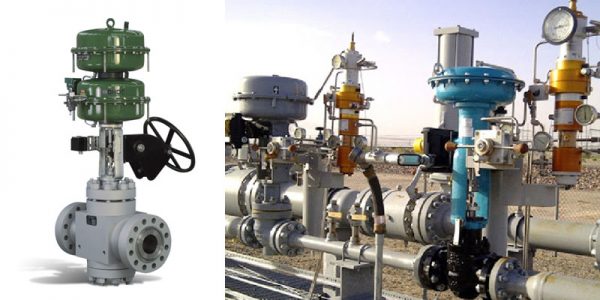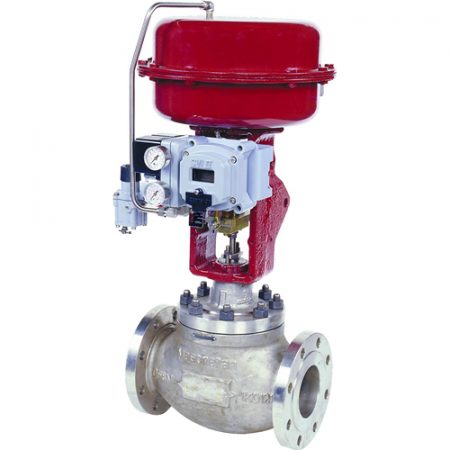Understanding the Importance of Control Valves in Process Automation
Understanding the Importance of Control Valves in Process Automation
Blog Article
Achieve Seamless Integration and Control With High Quality Structure Automation Controls
In the world of modern-day structure monitoring, the value of top quality building automation controls can not be overstated. Welcoming quality building automation controls is not just an issue of convenience however a calculated critical for companies intending to enhance their facilities' efficiency and sustainability.

Advancement of Structure Automation Controls
Throughout the past few decades, the evolution of constructing automation controls has significantly changed the method structures are managed and operated. Building automation systems mostly concentrated on fundamental functions such as regulating air, ventilation, and heating conditioning (HEATING AND COOLING) systems. As modern technology advanced, these controls have actually become a lot more innovative, permitting for a wider array of building systems to be incorporated and handled centrally.
The development of constructing automation controls has seen a change in the direction of even more intelligent systems that can adapt to changing problems in real-time. This adaptability is important for enhancing energy effectiveness and making certain resident convenience. Furthermore, contemporary building automation controls currently use functions such as anticipating upkeep, remote tracking, and information analytics, making it possible for center managers to make data-driven choices to improve building efficiency.

Advantages of Quality Assimilation
The advancement in structure automation regulates towards more intelligent systems has highlighted the substantial advantages of top quality integration in optimizing building procedures and boosting overall effectiveness. Quality assimilation of constructing automation controls uses several essential benefits. To start with, it leads to improved power performance by permitting various systems to function with each other seamlessly, guaranteeing ideal performance and lowering energy wastefulness. Second of all, quality integration boosts passenger comfort and productivity by enabling personalized control over ecological setups like temperature level, air, and lighting top quality. This personalization can lead to a much more conducive and comfortable working or living setting. Additionally, high quality assimilation simplifies maintenance and repairing processes, as all systems are adjoined and can be monitored and regulated from a centralized user interface. This central control additionally gives much better visibility and understandings right into structure performance, allowing proactive maintenance and optimization methods. On the whole, the benefits of high quality combination in structure automation controls are undeniable, using increased performance, convenience, and operational performance.
Enhanced Individual Experience and Ease Of Access
Enhancing individual interaction with building automation regulates via instinctive layout and improved ease of access elevates the overall experience for owners and center supervisors alike. By concentrating on customer experience, developing automation systems can end up being more effective and easy to use. Intuitive user interfaces, clear navigating, and adjustable setups encourage individuals to interact with the controls conveniently and successfully.
Availability functions play an important role in ensuring that all people, consisting of those with specials needs, can use the building automation regulates easily. Integrating attributes such as voice commands, responsive switches, and color-contrasted display screens can improve accessibility and make the controls more inclusive.
Furthermore, improved user experience causes greater customer complete satisfaction, boosted efficiency, and far better decision-making. Passengers can change ecological settings according to their choices, while center managers can effectively keep track of and take care of building systems - control valves. Generally, prioritizing individual experience and ease of access in structure automation controls adds to an extra efficient and smooth structure atmosphere for all stakeholders involved
Sustainable Practices With Automation

Additionally, automation can facilitate the integration of renewable energy sources such as solar panels or wind turbines into structure procedures. Via automation, buildings can align with contemporary sustainability objectives and contribute find out this here to a greener future.
Future Trends in Building Control Equipment
In expectancy of progressing innovations and developing sustainability techniques, the trajectory of structure control systems is poised to welcome ingenious remedies and transformative strategies. One famous trend shaping the future of structure control systems is the enhanced integration of Artificial Intelligence (AI) and artificial intelligence. These modern technologies enable buildings to adjust in real-time to altering conditions, maximizing power consumption and boosting convenience for passengers. Additionally, the Internet of Points (IoT) is revolutionizing structure control systems by linking gadgets and sensors to enhance and streamline operations efficiency.
An additional essential fad is the emphasis on cybersecurity procedures to shield against possible threats to developing automation systems. As structures become much more interconnected, ensuring robust cybersecurity procedures will certainly be vital to safeguard sensitive data and stop unapproved access.
Furthermore, the change in the direction of cloud-based platforms is acquiring momentum, enabling systematized control and remote accessibility to building systems. This facilitates simpler tracking, upkeep, and updates, boosting the total performance and flexibility of building control systems. As innovation remains to advance, these patterns are expected to form the future landscape of structure automation controls, driving development and sustainability in the constructed atmosphere.
Final Thought
In verdict, developing automation controls have progressed significantly, offering various benefits such as enhanced user experience, ease of access, and sustainable methods. Quality combination plays a crucial function in accomplishing smooth control and reliable operation of structure systems. Future trends in building control systems are most likely to concentrate on more boosting automation abilities for enhanced energy efficiency and overall performance. It is vital for building owners and operators to focus on the adoption of top quality building automation regulates to enhance building procedures and attain long-term sustainability objectives.
In the world of contemporary building monitoring, the value of high quality building automation controls can not be overemphasized. Generally, the development of structure automation regulates continues to drive advancement in the building administration industry, supplying brand-new opportunities for developing smarter and much more navigate to these guys sustainable buildings.
The advancement in structure automation manages in the direction of more smart systems has actually underscored the considerable benefits of high quality assimilation in optimizing building operations and improving overall effectiveness. Overall, focusing on customer experience and ease of access in structure automation regulates contributes to an extra seamless and efficient building environment for all stakeholders included.
It is vital for structure owners and drivers to prioritize the fostering of top quality building automation controls to optimize building operations and accomplish lasting sustainability goals. - control valves
Report this page